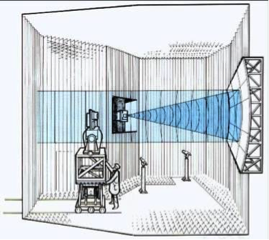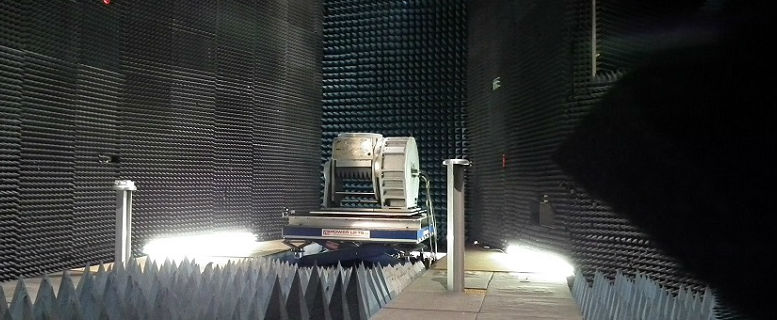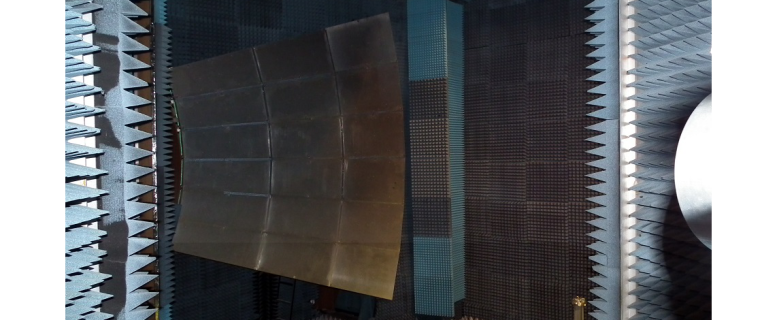Microwave Compact Antenna Test Range (CATR)
The Microwave CATR reflector is a parabolic single offset antenna of 6 m tall and 3 m wide constructed from 18 high precision surface panels. These panels were developed and manufactured at the Rutherford Appleton Laboratories, UK, for the James Clerk Maxwell Telescope. The individual panels have a measured average rms. surface accuracy between 8 and 15 microns. Each panel has three micrometer adjustable mounting points and are individually aligned using the two-theodolite method. At present the overall surface has an rms accuracy of about 90 microns, which allows measurements up to 100 GHz. The nominal quiet zone is 1 m in diameter and it has peak-to-peak amplitude and phase ripples of 1.0 dB and 10°, respectively.
The facility was constructed in the mid-nineties with the financial support of British Aerospace Space Systems Limited for the RF testing of AMSU-B a satellite-borne millimetre-wave radiometer funded by the UK Meteorological Office and operating up to 183GHz.


Currently, the range is operated successfully at frequencies between 8 and 100 GHz.
Although the postioner system used is the NSI-MI Series 700S-60, it is possible to reconfigure the chamber to use its original Orbit AL 4373-1 azimuth-over-elevation turntable, which can be loaded with a maximum load of 1 ton with positional accuracy on both axes of 0.005°. This turntable system is mounted on rails and has a hydraulic platform to provide height adjustment (see photo below).

Back to Antenna Measurement Laboratory.

